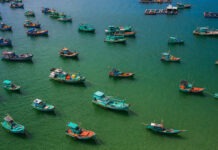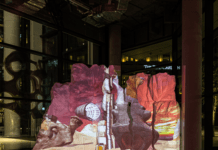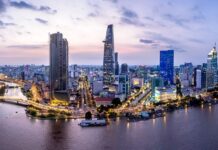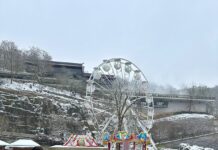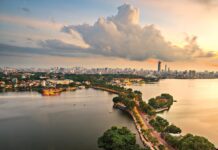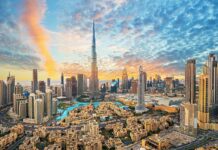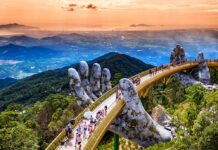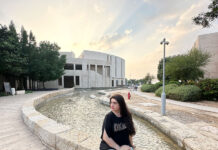With a recorded history of more than three thousand years, and early human settlements that date back tens of thousands of years before that, the island has had a checkered past that spans from prehistoric times to modern day.
Throughout its eventful history the country’s geographic location, rich resources and its natural harbors have attracted invasions by regional Indian kings, visits by Greek sailors and Arab traders, occupation and colonization by the Portuguese, Dutch and English.
During its history the country has also undergone several name changes; from being referred to as Lanka in ancient Indian epics to being called Taprobane by the Greeks, Serendib by the Arabs, Ceilão by the Portuguese and Ceylon by the English. The country gained independence as the Dominion of Ceylon and in 1978, reverted back to its Sanskrit name of Sri Lanka and six years later became today’s Democratic Socialist Republic of Sri Lanka. The country’s storied past has left behind indelible marks that continue to influence and impress to this day in the variety of its culture, religions, art and architecture. And, it is this unique admixture that adds color to the wefts and warps of Sri Lankan society and which continue to be such a huge draw for visitors from around the world.
Following the end of civil war in 2009, the once booming Sri Lankan tourism industry is rapidly regaining its luster. In 2011-12 nearly a million visitors from around the globe visited the island nation and last year the country was named best valued destination for holidays by several worldwide holiday cost barometers. Factors that go to making the island a tourism haven include its exotic and authentic locales as well as its diversity of tourism offerings. It is no wonder then that the 12th century, worldwide traveler and explorer Marco Polo called Sri Lanka, the finest island in the whole world. The unique synthesis of people, art and culture on the island are complemented by its tourism diversity that includes its scenic beauty, unspoiled beaches, untrammeled rainforests and mountain paths, colorful heritage and vibrant festivals.
Despite its relative small size, the land and waters around the island are noted for the richness of their biodiversity that includes both large mammals like elephants, leopards, blue whales and sperm whales, as well as smaller fauna like unique birds, fishes and butterflies. The country’s geographic location and varying climatic conditions also make the island the perfect sports tourism destination.
Some of the popular sports include canoeing, diving, fishing, golf, hot-air ballooning, rafting, rock-climbing, scuba diving, snorkeling and trekking. Sri Lanka is also famous for wellness holiday packages that include traditional Ayurveda hospitals and spas, yoga training and a large number of meditation centers.
Heritage Travel: With thousands of years of recorded past behind it, Sri Lanka has a rich heritage with several UNESCO designated world heritage sites among its main attractions. The ancient cities at Anuradapura, Sigiriya and Polonnaruwa, temples and monsateries at Dambulla, Kandy and Maligawila, fortresses at Galle and Yapahuwa are only some of the heritage destinations.
Sigiriya Rock: Built by an obsessed monarch in the 5th century, Sigiriya or Lion Rock is an astonishing feat of engineering and construction. The most striking portion of Sigiriya is its terracotta and grey core of rock, which rises a sheer 200 meters above the surrounding forested plain, its flattened summit sloping gently. A series of moats, ramparts and water gardens — remnants of an ancient city — are spread out on two sides of the rock, with the remains of a pair of giant stone lion’s paws still guarding the staircase that leads to the summit.

Temple of Tooth: Known as Dalda Maligawa, and located in the city of Kandy, it is one of the most sacred Buddhist pilgrimage sites and houses the sacred tooth of Lord Buddha. The tooth was said to be taken from the The tooth was said to be taken from the flames of Buddha’s funeral pyre in 543 BCE and was smuggled into Sri Lanka during the 4th century AD, hidden in the hair of a princess. The temple took nearly 100 years to construct. The construction was started in 1687 and finished in 1782. It is an imposing pink-painted structure, surrounded by a deep moat.
Maligawila: Located about 15 km to the south of Monaragala, it is popular for the two colossal statues of Buddha, which date back to 7th century CE. Both statues are carved from crystalline limestone. One of the statues is 11m high and is considered to be the world’s largest free standing Buddha figure.
Eco-Tourism: Sri Lankan ecotourism is a growing niche sector where one can choose an ecotourism resort that preserves the environment, culture and heritage, while benefitting local communities who are the key custodians of natural resources and play an active and critical role in conserving valuable biodiversity. The beautiful Horton plains and Singharaja rainforests are nature paradises that add to the ecotourism lure of the island.
When you choose to travel this way, you are not part of mass tourism but part of up-market niche tourism that specializes in small groups and in-depth and first-hand knowledge of an environment. As part of your travel plans, you consciously choose to enjoy your holiday as a learning and enriching experience whilst also minimally impacting the environment and obtaining a positive experience.
Beach Holidays
Likened to a pearl drop in the ocean, Sri Lanka is surrounded by sea that makes it a perfect beach holiday destination. With over 1300 km of soft, fine sand on its beach and aquamarine waters of the Indian Ocean at its doorstep, Sri Lanka offers the idyllic beach holiday location. Whether you are looking to just relax in the sun and get the perfect tan or if you are looking for more action such as surfing, diving or jet skiing, Sri Lanka has much to offer with its world renowned best beaches.

Negombo Beach: Just seven kilometers from the Bandaranaike International Airport, at the tip of the Negombo lagoon lies the busy Negombo beach. Lush coconut palms and mangroves run along the beach, while the age old catamarans, outrigger canoes, and the more modern trawlers gently bounce at sea. Negombo is a famous fishing village that is equally proud of its Dutch fort and other Dutch period architecture.
Tangalle Beach: Many people claim that the beaches around Tangalle have the softest sand and the safest sea along the entire south coast. Tangalle seems set to become one of the most exclusive of beaches in Sri Lanka. The sea facing Tangalle offers a chance to scuba dive around the coral reef protecting its four kilometres of sandy beach, and to explore a couple of wrecks.

Unawatuna Beach: A lovely and picturesque semi-circular stretch of golden sands bordered with coconut palm trees, Unawatuna is located four kilometers to the south along the coast of Galle. If you enjoy listening to the sound of waves gently lapping on the shore or want to dive deep in the aquamarine water of the Indian Ocean then Unawatuna is for you. The beach in Unawatuna has been voted as one of the “top 10 most beautiful beaches in the world”.
Whale watching: Mischievous dolphins and some of the oldest and the largest sea creatures, the humpback and the blue whales, nonchalantly glide past you, when you embark on a whale-watching excursion off the Southern, Eastern or the West coast of Sri Lanka. The ideal locations for whale watching would be Dondra Point, which is accessible from Galle, Hikkaduwa and Mirissa.
Festival celebrations
With four main religions, Buddhism, Hinduism, Islam and Christianity coexisting harmoniously, the island offers year round religious and cultural festivals and celebrations.

Nawam Maha Perahera: Held in February this is an annual event in Colombo. The heavily decorated elephants are the major attractions here with the parades and performances. Thousands throng the country’s metropolis as the streets of Colombo give way to a grand pageant that combines dance, culture and splendor. The Navam Maha Perahera is a much celebrated and revered occasion that brings together communities and depicts the country’s rich cultural traditions.
Aluth Avurudda: The Sinhalese Buddhist and Tamil Hindus in Sri Lanka join forces to celebrate Aluth Avurudda – their mutual new year. This also coincides with the time when the harvest ends, so the colorful fruit from the trees is collected in bulk to fuel the weeklong celebrations. Festivities are prepared well in advance and most of the country grinds to a halt as hundreds travel home to be with their families.
The rituals begin with the cleaning of the house and lighting of an oil lamp, and woman congregate to bash on the raban (drum) to warn others of the incipient change in the year. If you fail to hear this, a storm of firecrackers is bound to hammer the point home. Families indulge in a variety of rituals which are carefully determined by astrological calculations —from lighting the fire to making the kiri bath (milk rice) bath, to entering into the first business transaction and eating the first morsels.

Katharagama Festival: Held from mid July to the first of August, this is a major festival. Katharagama in the south-East corner of the island is a jungle shrine and a popular pilgrim center for Buddhists and Hindus. Kandy Esala Perahara: The festival which begins in mid-July and runs till early August is one of the most magnificent festivals of Sri Lanka. A spectacular medieval day pageant is held for 10 nights with Kandyan dancers and drummers in colorful traditional costumes.
Kandyan chieftains in medieval court dress, more than one hundred caparisoned elephants, whip crackers and torch bearers are some of the highlights that make the festival an unforgettable experience. Visitors to Sri Lanka are embraced by the island’s warmth of welcome and swept away by its serenity. With so many experiences to offer, a visitor can pick the one that offers the bliss they prefer.








